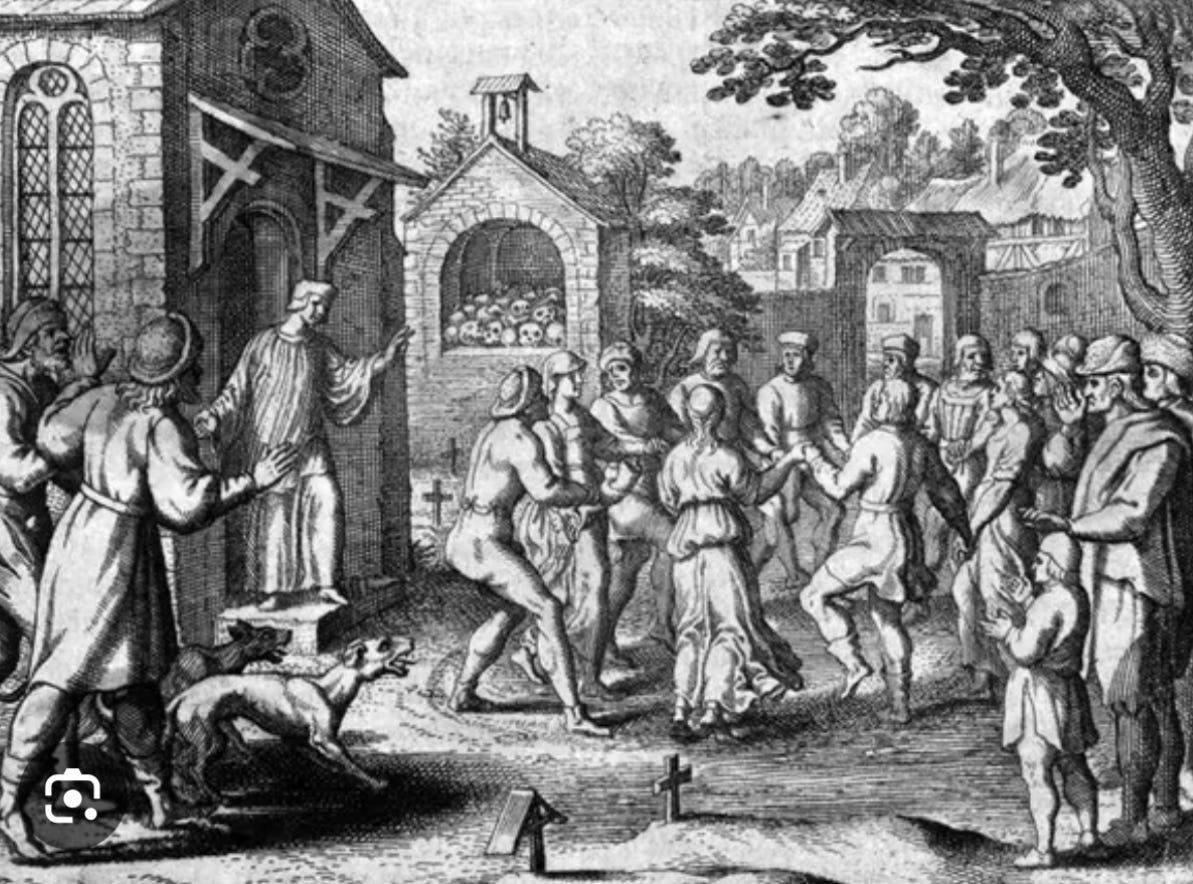I recently finished reading Kiran Millwood Hargrave’s 2022 novel ‘The Dance Tree.’ A beautifully evocative work which deals with the 1518 dance mania that took over the city square. The sufferers danced themselves into a frenzy, and even in some cases to death. We see the descent of the city and its people through the eyes of Lisbet, a pregnant beekeeper who has lost so many babies that it is a wonder she has any hope left. Despite the heavy subject matter, this book is uplifting at its core, and incited in me an eagerness to learn more about the dance plagues that have afflicted cities upon cities, across so many generations.
Hargrave’s novel centres around women, and their struggle to keep their sanity under the oppression of the church and Holy Roman Empire. Despite the dance plagues affecting men, women and even children, Millwood Hargraves’ decision to focus purely on the women who were dancing strikes a chord. It was a woman by the name of Frau Troffea who began to dance in Strasburg square in July 1518, setting off what would become known as the Strasbourg dance plague. By August there were already hundreds of dancers, spinning and whirling, entranced day and night by something out of reach of the terrified onlookers. In a desperate attempt to curb the mania, Strasbourg Council built a stage in the market place, and hired musicians to play at all hours, supposedly to keep the dancers going until they died from exhaustion, with the end goal to be rid of all participants. However, this failed to work, and the dancers were taken to the shrine of St Vitus, just outside the city. St Vitus is the patron saint of dance, and the women were forced to walk around his shrine in red shoes, in the hope that St Vitus would take pity on them and reverse this madness. In fact, Hans Christian Anderson, the prolific fairytale author, was inspired by this episode, and based his tale of The Red Shoes upon it, about a girl who was cursed to dance herself to death.
So what caused this mania? For a time it was theorised that ergotism was likely. Ergotism is the effect of long-term ergot poisoning, due to the ingestion of infected rye. It can induce awful hallucinations and psychosis-like symptoms, but there is a gaping flaw in this theory which many have pointed out. If this mania was caused by eating moulded rye, surely whole households would have been affected? Instead we see mothers and wives twirling manically on the stage while their desperate husbands and children begged them to stop. What is clear is that the people of Strasbourg and its outlying towns and villages had been under immense stress for a while. Devastating harvest failures, the consequential inflation, the outbreak of a new disease called Syphilis, and strange comets created a cocktail for crisis.
What is even more disturbing is the fact that nunneries during this time were especially susceptible to this kind of dancing mania. For example, a mother superior by the name of Jeanne de Anges, of the Louden nunnery in Southern France, became infatuated with a local priest in 1627. She felt so guilty that she fell into a dissociative state, accusing the priest of colluding with the devil. Medical historian John Waller highlights the especially toxic psychological environment of Early Modern nunneries and that the fear of sinning and ending up in the fiery pits below was so ingrained into the nuns that it drove them to psychological breakdowns. There is the awful realisation that the pressure put on young women to be perfect, pure and peaceful all the time is universal, and has been perpetuated for centuries. The most powerful thing Hargrave does in The Dance Tree is suggest that there was no mania at all. It was just women desperate for an escape from their controlling husbands, the oppression of the Church, and the disastrous weather phenomena.
What the dance mania of 1518 teaches us is that women are labeled mad because it is the easiest way to control the uncontrollable. The powerful do not like it when women do not conform, they are threatened by the idea of women not needing men to make them happy. The dancing women in Hargraves’ novel are happy when they are on the stage in their own world. They finally feel free from their stress and sadness and can revel in the beauty of their own mind. It is not a prison for them any longer.
Sources used:
https://www.bps.org.uk/psychologist/dancing-plagues-and-mass-hysteria
https://www.bbc.co.uk/culture/article/20220512-the-people-who-danced-themselves-to-death




